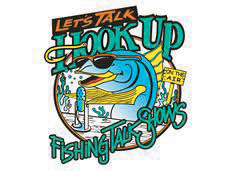
Unique way of fishing proves popular in Baja -
Sept. 18, 1998 - Western Outdoor News
By Gundy Gunderson
As we slid the boats into the water for the first time in front of Rancho Leonero on Baja's East Cape, I had a sensation we were being watched. I began paddling, stroking, gliding the kayak over the slick, windless water, I glanced over my shoulder to catch a glimpse of a group of chuckling "ranch" employees. One of the hard-working porters yelled, jokingly, "tiburon" (shark in Spanish).
I smiled, glanced at Spike and continued paddling toward the blue water.
I sensed they thought we were a little bit crazy to be paddling out into the blue. Perhaps, but I've found, in my experience, that the best way to deal with skepticism is to produce results. And on that very first evening, with a 35-pound yellowfin tuna and for the following 5 days, with a parade of quality East Cape game fish, we did. By week's end, comments of light-hearted ridicule turned to comments of respect from our friends at the ranch.
Dennis Spike, operator of Coastal Kayak Fishing Schools in Reseda, Leo Rutten, a rose grower and avid kayak fisherman from Carpinteria, and this writer spent 6 days exclusively kayak fishing at John Ireland's Rancho Leonero. "The Ranch" is one of Baja's jewels, a beautiful resort that recalls the feel of an old Mexican rancho and traditional East Cape fishing lodge. Since 1995, Rancho Leonero has maintained a fleet of kayaks for both fishing and recreational use. The boats are easy to paddle, stable, and rigged with rod and paddle holders for anglers. They are excellent fishing platforms tailored for the phenomenal fishing found amongst the many reefs scattered in front of the resort.
Fishing the blue water line just outside the moored boats of the Rancho Leonero sportfishing fleet, the kayak group found great action on a variety of game fish. The catch list was a who's who of Baja reef fish - yellowfin tuna, black skipjack, sierra, cabrilla, amberjack, barred pargo, jack crevalle, green jacks, African pompano, dog snapper and red snapper. Such a variety of fish is not often caught on any one Baja trip. We were fortunate to enjoy such good fishing.
The largest fish was a 37-pound yellowfin tuna taken on a slow-trolled mackerel. The tough fish towed the kayak and angler several hundred yards before reluctantly coming to gaff. The group took 6 tuna total. All other fish came on the iron. We found a good bite yo-yoing of the bottom. Thirty-pound test on good jigging rod and reel was the best rig.
On the East Cape, it's common to see a lot of surface activity. But excepting the first evening, we saw very little in the way of surface activity. What activity we saw was small reef fish and needlefish working the shallow reefs.
The lack of surface action was deceiving because the action sub-surface was excellent. Borrowing from the long-range textbook, if I'm not getting bites on the surface, I like to let the jig fall to the bottom, then burn some yo-yos back to the surface. Using this technique, we began hooking fish, some on the drop, others on the fast wind. Once the pattern was established, the bite was on.
Rutten quickly learned this technique, then proceeded to school us with a parade of spectacular catches topped by two 25 to 30-pound jack crevalle, two amberjack in the 20-pound range and a 29-pound dog snapper that fought Rutten tooth and nail. The guy even hooked and lost a sailfish (our plan for landing this fish was purely theoretical).
Spike landed a 35-pound yellowfin on 20-pound test. The fish ate a 2 1/2 ounce Krocodile. This was one of our hottest lures. It fishes well on the jig, on the yo-yo and especially on the drop. The fight began late in the evening and lasted into the Baja night. We never lost sight of each other or the familiar lights at the "ranch".
I was fortunate to land three yellowfin tuna, with the largest weighing 37 pounds, several black skipjack to 25 pounds, and a host of reef fish including several large pargo, snapper, cabrilla and a couple beautiful African pompano.
Most of the fish were released. With increased angling pressure in this area, a conservation-based approach will ensure the long-term viability of this outstanding fishery. We took one or two fish a day for dinner which was deliciously prepared by the excellent kitchen staff. The fresh fruit and juices, tasty soups and excellent entrees kept our kayaking bodies well-fueled.
When kayak fishing in Baja, there are a few important things to consider. Baja weather can change very quickly. Smart anglers stay near the beach when in doubt about changing conditions.
The Baja heat is extreme, so wear protective clothing - light-colored shirts, hats, and sunglasses. Use sunscreen. I like a lifeguard hat to keep the sun off my head. A towel can be wet and laid over the legs to cool and protect them from the sun. Bring at least a half-gallon of drinking water each outing. Proper hydration is essential when combining physical exertion with extreme heat. Limit your alcohol intake - it will affect your paddling and cause dehydration.
In addition to protecting ourselves, we limited our fishing to the cool, early morning and late evening hours. When the mid-day sun was up, it was time for a cool dip in the Rancho Leonero pool, a delicious lunch, and an afternoon siesta. The early morning and late evening hours were more comfortable and provided the best fishing of the day.